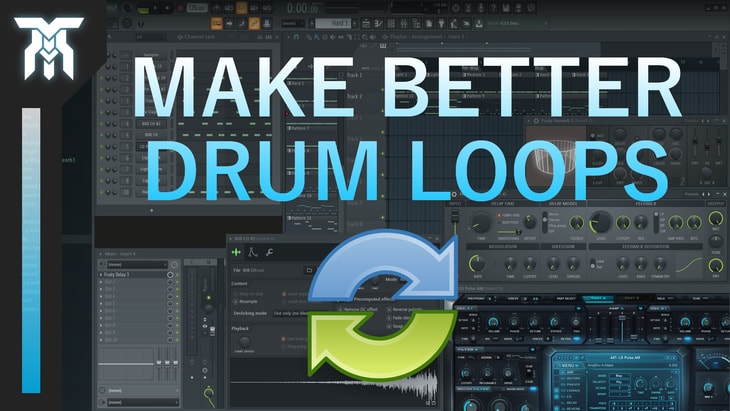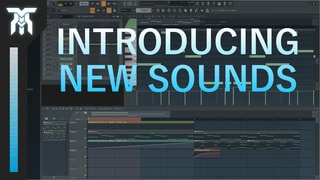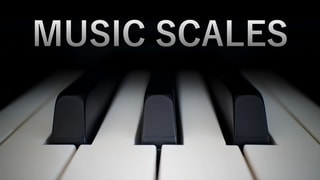Updated: Jun 27, 2019
Share!
How To Make Drum Loops Sound Better

Learn how to make drum loops and percussion sound better in this blog post.
Drums can start to sound pretty stale after listing to a typical 1 or 2 bar loop for an entire song.
So, In this music production tutorial, I'll teach you how to make percussion sound better.
There are many ways to make your percussion sound more interesting, with not only the individual samples but with entire loops too.
Let's start with making simple changes to the drum samples you have to work with, then move on to creating variations in drum patterns to keep things interesting.
Stick around for the bonus tip at the end as well.
Adding Reversed Drums Before Regular Ones
The first thing I want to talk about is a really cool way to make your snares, claps, or even snaps sound a lot better by taking advantage of this one trick.
Either pick out an entirely new sample or just duplicate the one you have.
Then, reverse it and place it right before every second instance of the type of percussion you want to enhance. Just make sure everything is lined up or it may sound a bit off.
Using Subtle Reverb or Delay
Okay, moving on to the next method, you can fill in the emptiness of a drum loop with subtle effects like reverb and delay.
If you're just starting out with this kind of stuff I would avoid adding reverb and maybe delay to a kick drum.
I hardly ever use effects other than EQ on kick drums as applying reverb to low-frequency sounds can make everything blend together and remove the clarity of each individual sound, this is often called making something "muddy" in mixing terms.
With that said, I do think adding delay to high-hats and sometimes reverb to snares can make a huge difference in the quality of your percussion.
Let's start with the high-hats.
A good way to add delay to something while maintaining the rhythm is by locking it to tempo.
You should also avoid making the delay carry on past the next time this sound is heard, the decibel level can start to add up.
For snares, I would set the decay time to something around 1-3 seconds so it doesn't muddy up the mix as I mentioned before.
Make Variations in Drum Patterns
Now, to finish it all up, an important thing to do is make variations in your drum patterns. These aren't huge changes either.
And if you want to make catchy music, using the same pattern every second variation can keep things consistent and prevent an endless progression.
So, what this may look like is a 1, 2, 1, 3 arrangement.
Let's go over how to actually do this effectively though.
Once you have your first pattern, it will save you a bunch of time to duplicate it twice to make the other two from.
If you're using FL Studio, either use the hotkey CTRL+SHIFT+C or right click on the pattern and select "clone".
The choice is yours but you can make pattern 1 a bit more subtle, while having more energy in pattern two, and 3 having a bit more energy than 2.
The length of each of these patterns also comes down to how long your melody loops are.
You may notice it will sound better when these two line up in repetition, both restarting at the same time.
Let's say you have a 4 bar melody that also has variation every second pattern.
You can make each drum loop two bars instead of one and make the 1, 2, 1, 3 arrangement line up to match the length of two melody patterns instead of one.
Use Progressive Drum Samples
Now for a bonus tip. Try using different drum samples and patterns throughout your song's arrangement.
Nothing major, but try to aim for a subtle, medium and hard version of some (or all) of the percussion you're using.
So for example, you would use lighter or subtle percussion during the intro, medium during bridges and maybe outros, and harder percussion during the chorus or drop.
Again, set it up how you want it to sound. You can even start off with the more aggressive or heavier drum samples in your intro, it just depends on what your goal is creatively.
I hope these tips will help you create better drum patterns in your music, whether it's EDM, hip-hop, or even music for video games. As always, thanks for reading!
Featured Post
More Composition Tutorials
Share!
Join the newsletter for free stuff and some knowledge too!
Everything you need. No Spam. A heads up before others do.











